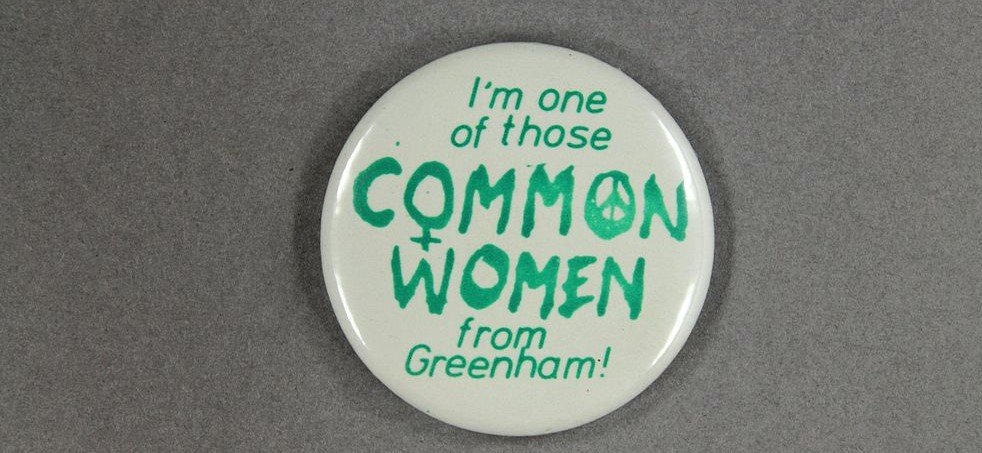
A train trip back in time
“Going anywhere nice today?”
Taking the drink from the young woman at the station kiosk, I replied:
“We’re off to Newbury, to Greenham Common. It’s the 40-year anniversary of the Greenham Common Women’s Peace Camp. My mum was one of the Greenham Women. We’re going to see the events and exhibitions.”
“I’ve never heard of that; what was it?”
“Well, back at the beginning of the ’80s, the Americans brought over nuclear cruise missiles that could be launched in a war with Russia. There were marches and thousands of women got involved with protest camps outside military bases, including at RAF Greenham Common.”
“That’s fascinating! I didn’t know anything about that; I’m going to look into it.”
*****
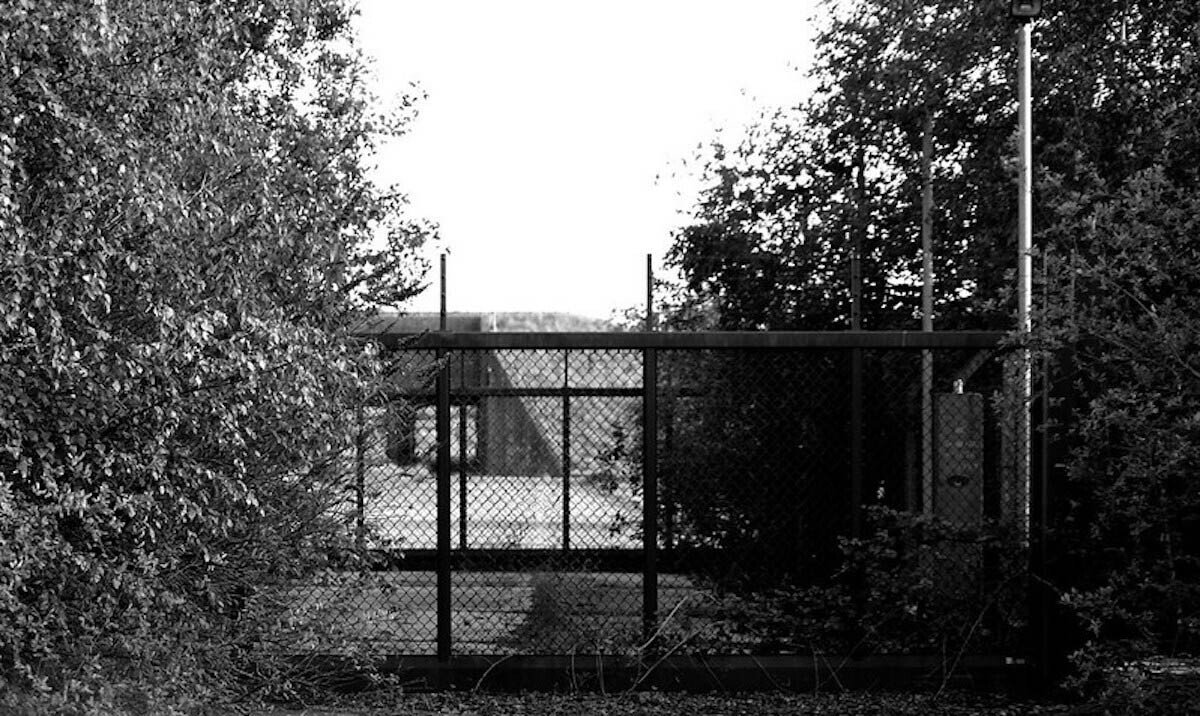
This year, 2021, marks 40 years since the start of one of the most significant campaigns in UK protest history. The 1980s’ anti-nuclear movement saw thousands of people come together against the siting of US nuclear cruise missiles on British soil. Marches crossed the land, camps encircled military bases and women were at the forefront.
And yet, in 2021, how many people recognise the significance of these events, or even know about them? What legacy have the Greenham Women left us?
Nuclear weapons and early protest in the UK: a brief history
In 1952, the UK announced that it had become the third country in the world to develop nuclear missiles, following the USA and the Soviet Union. After initial attempts to develop its own launching systems were dropped, the UK agreed to purchase them from the United States. Polaris and, later, Trident missiles formed the backbone of the UK’s nuclear arsenal.
Protest against nuclear missiles had started very early on after their development and, by the late 1950s, the Campaign for Nuclear Disarmament (CND) was leading large-scale marches to Aldermaston in Berkshire, the country’s Atomic Weapons Research Establishment site. These protests continued throughout the 1960s, attracting thousands of supporters.
Towards Greenham Common
On 17 June, 1980, then Secretary of State for Defence Francis Pym announced that 160 American nuclear cruise missiles would be stored at RAF Greenham Common, near Newbury in Berkshire, and at the by-then disused RAF Molesworth in Cambridgeshire.
Although the UK already had hundreds of nuclear warheads, these would be American owned and would not operate under the ‘dual-key’ system, meaning that they could be launched without British cooperation. Despite Pym’s reassurances that the Americans would never do so, this fact gave rise to an obvious question: would the UK act as a proxy launch-pad in a conflict between the super powers?
The following summer, ‘Women for Life on Earth’, with some men accompanying the group as supporters, set out to march from Cardiff to RAF Greenham Common in protest against the plans. Having passed through several west-country towns on the way, including Bath and Devizes, they arrived on 5 September, 1981. They handed in a letter for the base commander, stating in part:
“We fear for the future of all our children and for the future of the living world, which is the basis of all life.”
A call for debate was ignored, and the military command expected the women to go home. The decision they took, however, was a catalyst for years of protest that captured attention around the world.
The Women’s Peace Camp
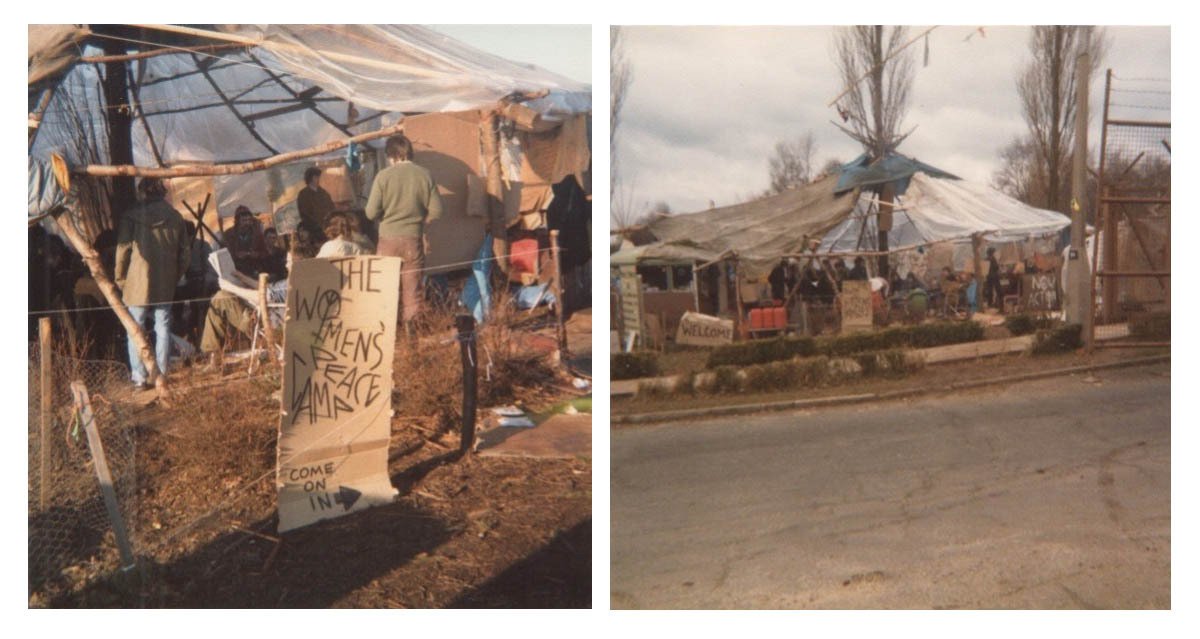
Refusing to disperse, ‘Women for Life on Earth’ set up camp outside the perimeter fence, bringing almost immediate publicity. Other encampments would follow elsewhere – for example, outside the Faslane naval base in Scotland – but arguably it was the decision to remain women-only that ensured global significance for the Greenham Common Peace Camp.
As news of the protests spread, unsuccessful attempts were made by Newbury District Council to evict the peace camp. By December 1982, the reach of the campaign was made clear when 30,000 women came together to link hands around RAF Greenham Common to ‘Embrace the Base’, with some scaling fences to dance on the missile silos. The following April, 70,000 people formed a 14-mile chain from Greenham to Aldermaston.
Protests continued over the years that followed, with military convoys blocked from leaving the base, tracked and otherwise disrupted using non-violent methods such as sitting in the road. Hundreds of women were arrested at both Greenham and other sites across the UK and convicted for their actions, including my mother, Christine, who refused to pay a fine and spent a week in prison. This may be where my love of subversive protest songs began.
Trident, Trident (to the tune of ‘Daisy, Daisy’)
Trident, Trident, what an insane idea!
Thousands homeless all for the cost of fear.
We can’t afford medication, or proper education,
But we’ve got to pay, a million a day,
So that Britain can disappear.
After the US–USSR Intermediate Nuclear Forces Treaty had been signed in 1987, the missiles were flown back to the USA in 1991–92.
Women continued to live outside the base in often difficult conditions until a decision was made to bring this part of protest history to an end in 2000.
Greenham Women on their involvement: no regrets
Pat Brandwood and Christine O’Luby were Greenham Women, who travelled by train for the 40-year anniversary. Sitting down for a cup of tea at the Greenham Watchtower Cafe, they shared memories.
Pat Brandwood:
“I was involved with the Greenham protests in the mid-1980s. At first, I was part of a group of women who tracked the missiles when they were being transported at night from Greenham to Salisbury plain for a practice launch. Cruise [sic] was carried on an enormous truck at very low speed. We could easily track its progress and use telephone boxes to alert other women to take over when we returned home. There were no mobile phones then.
“Once, when I was tracking on my own, I entered a phone box in Tidworth to alert another woman to take over. Suddenly a tank appeared and two armed soldiers burst in. They were silent, but the message not to make the call was clear. I left.
“We later discovered that when Cruise was travelling on these practice runs, the phone boxes in Tidworth were disconnected, meaning residents would have been unable to use them to call the emergency services.
“Another time when four other women were tracking Cruise in an old VW campervan, a tank suddenly blocked their way. Armed soldiers surrounded the van and a helicopter landed on top. This scene was sketched from inside the van by my friend Susan Hartley and I have a copy of the sketch.”
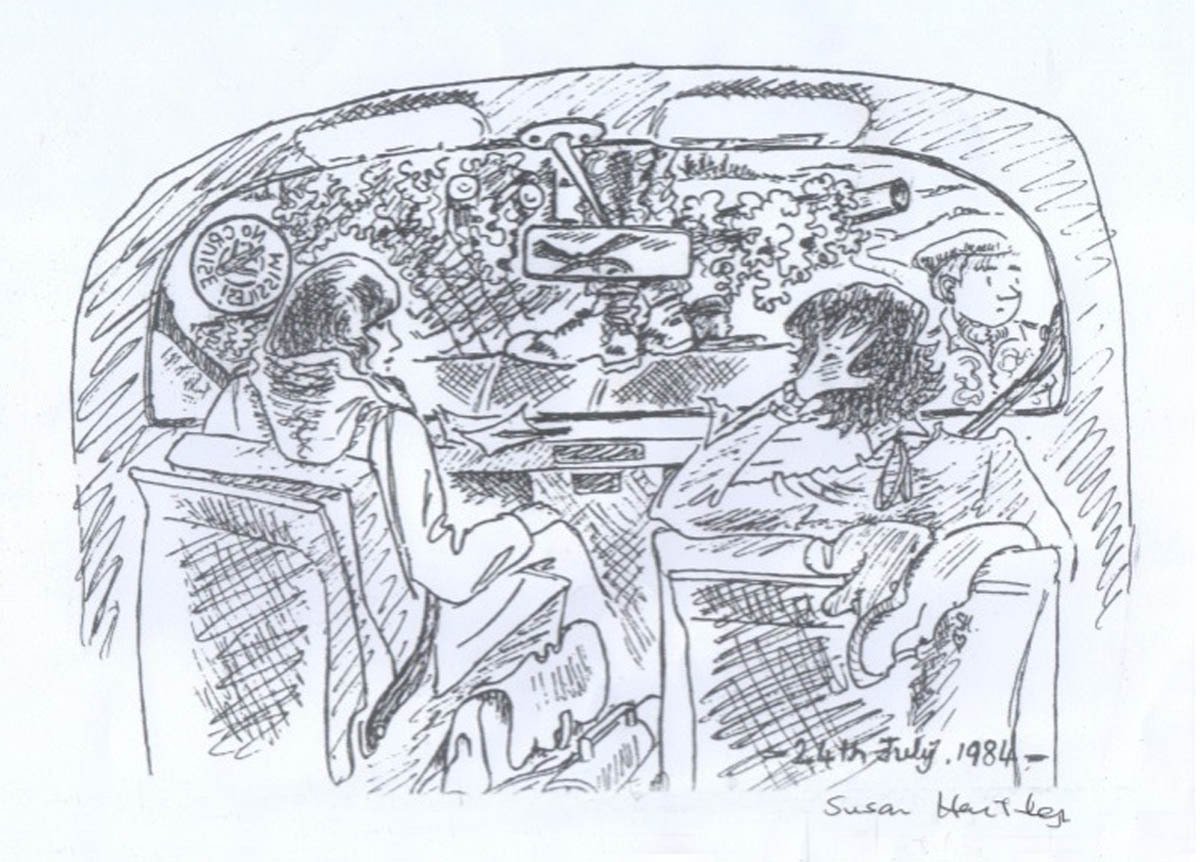
“We tried to get newspapers to cover these events, but none would. I did not want to get arrested because I would have lost my job. I did go up to the camp at Yellow Gate, on my own and once with Susan Hartley, at weekends to show support for the women who were camping there, in dire conditions, no facilities at all, just a polythene sheet to keep out the rain.
“Once, when I was walking around the site, a car pulled up beside me. The men inside let two large dogs out and they ran towards me barking aggressively. I held the backs of my hands out towards them and they calmed down, following me on my walk. I don’t know how or if they were recovered.
“A group of local residents were very aggressive at times towards the women. I always thought that they were blind to the reality that, should Cruise become the focus of an attack by the Russians, then it would be local residents who would suffer the most.”
Christine O’Luby:
“I live in Bournemouth, but I’m from Lewis in the Outer Hebrides and, in the late 1970s, I became involved in the ‘Keep NATO Out’ campaign to prevent RAF Stornoway becoming a nuclear air base. I later joined Bournemouth CND, and took part in the Greenham protests, including the first blockade with 300 women on 21 March, 1982. In the months that followed, I and members of my family joined peace marches in Scotland and Dorset, and I was there at the Greenham blockade in December 1982.”
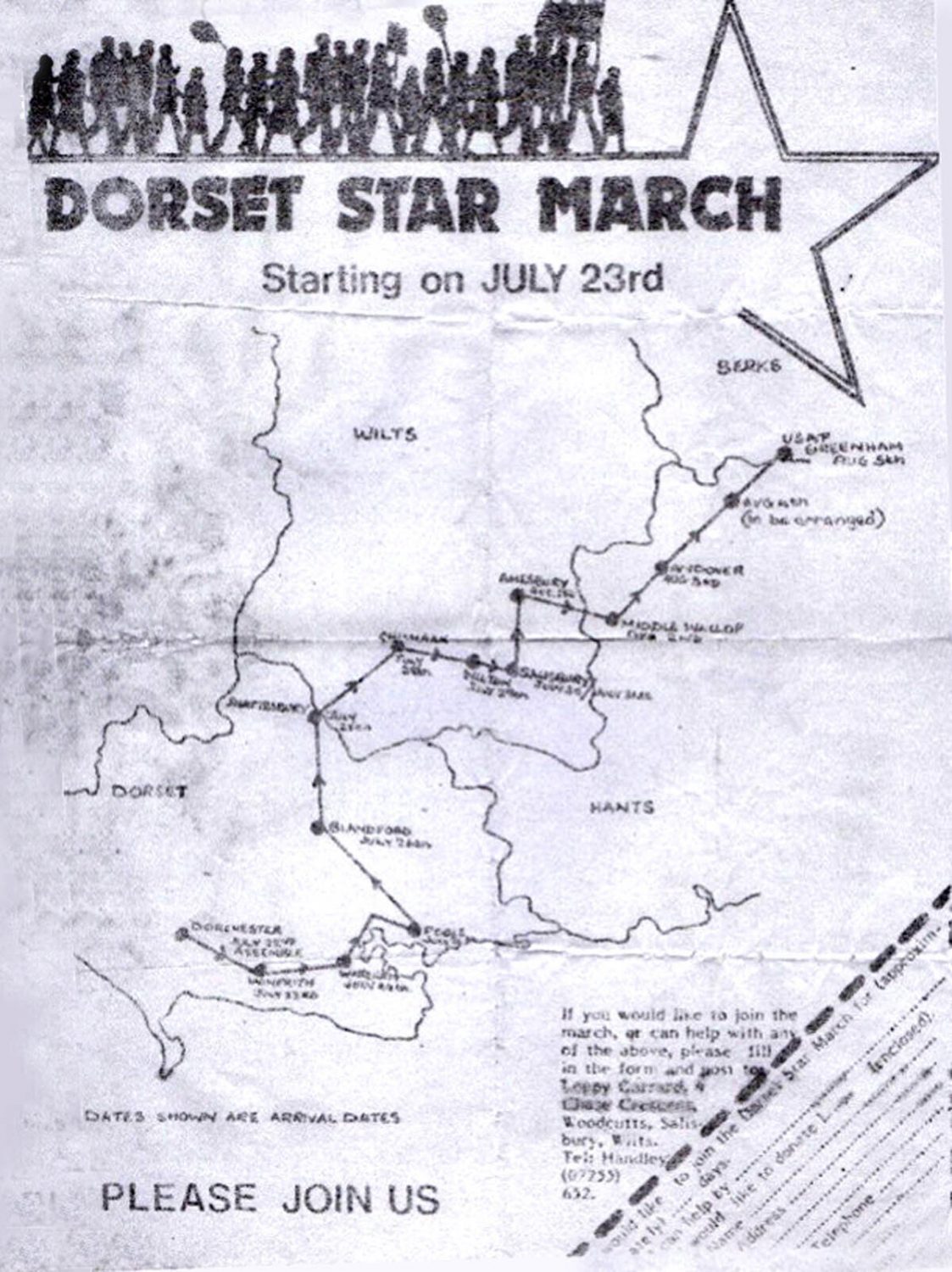
“In 1983, I was in both Stornoway and at Upper Heyford Nuclear Air Base in Oxfordshire, where I was arrested in June for blockading the road (for which I eventually received a one-week prison sentence in November 1985 for refusal to pay a fine)”.
In an interview with the Bournemouth Evening Echo (21 November, 1985), Christine told the reporter that, “the nuclear promoters are the guilty ones, not I”.
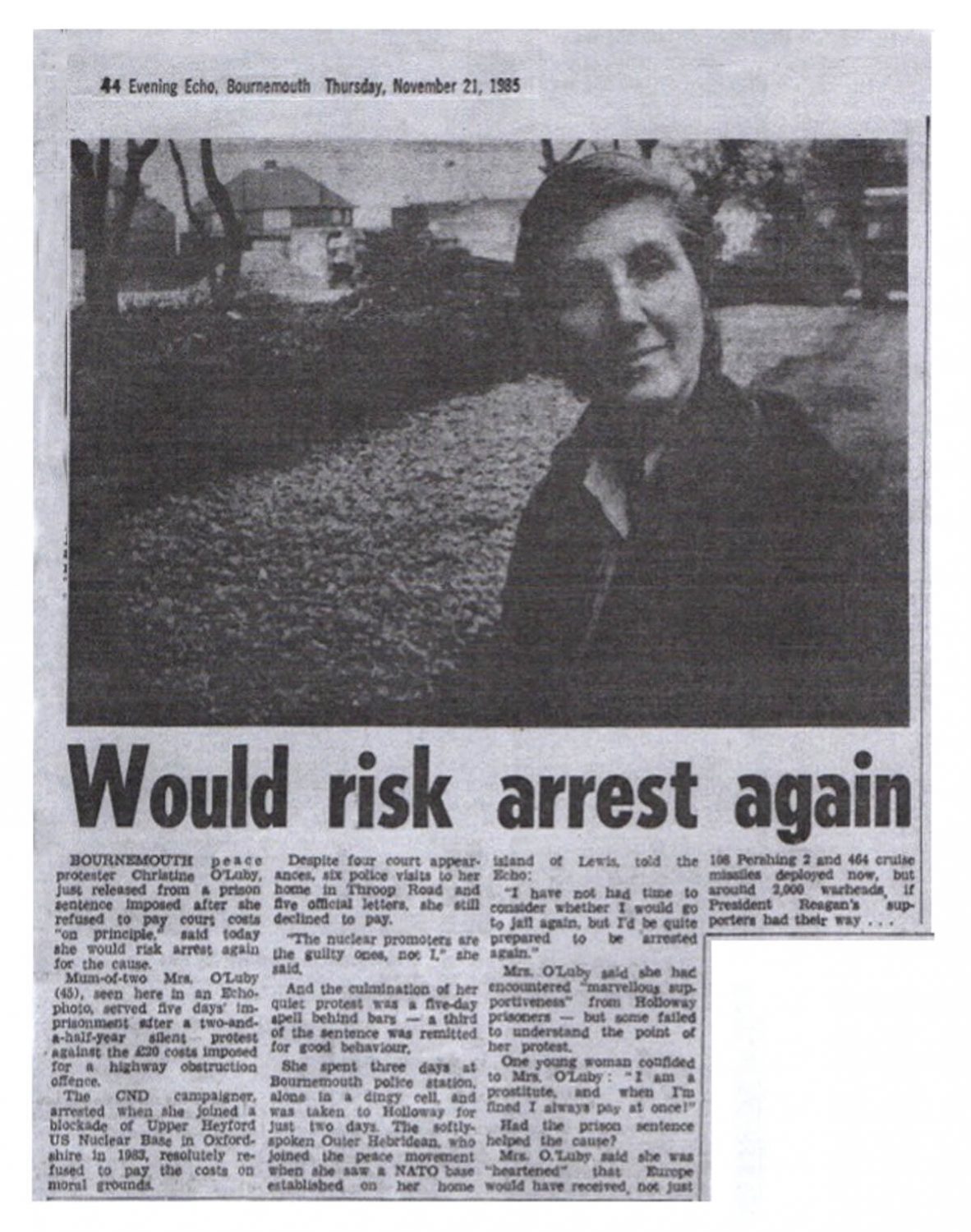
Marking the anniversary
Greenham Women Everywhere and feminist theatre company Scary Little Girls worked together to organise the fortieth anniversary event, which took place over three days in September.
Pat Brandwood:
“I enjoyed revisiting Greenham for the fortieth reunion, seeing the green space which is now where the missiles and all the fencing were. It was good to see that young women are enthusiastic about not letting the Greenham protests be forgotten.
“I felt that the exhibition in the control tower gave far too much space to those who opposed the entirely non-violent women’s camp. The language they used was abusive and was being replayed loudly, eg calling the women ‘harridans’.
“The Greenham Women carried out a peaceful protest at the presence of weapons of mass destruction in close proximity to large populations in the UK countryside. These weapons were under the control of the USA, not the UK government. The women were accused of causing damage to the site. In fact, this amounted to cutting a wire fence and dancing on the silos. Compare this with the damage and loss of life a nuclear weapon can cause.
“Women who tracked Cruise at night were met aggressively with tanks and rifles. All we were trying to demonstrate was that if we could track Cruise, then so could an enemy agent, with far more sophisticated equipment.
“The fortieth reunion event was noted by the BBC, but only given about one minute on South Today. There still seems to be a reluctance by the media to acknowledge that the women did help in the removal of these dangerous weapons.”
Christine O’Luby:
“I very much enjoyed visiting Greenham after all this time. It was a lovely day and the walk there was beautiful. I was really struck how big the area was; we didn’t see half of the common.
“There were various tables outside the watchtower, with campaign memorabilia, and we went right through the exhibition and picked up all the leaflets. There was also quite a bit of information up on the walls which I took down in pen. I showed Pat some photos of the old days and a write-up about the things I’d been involved with.”
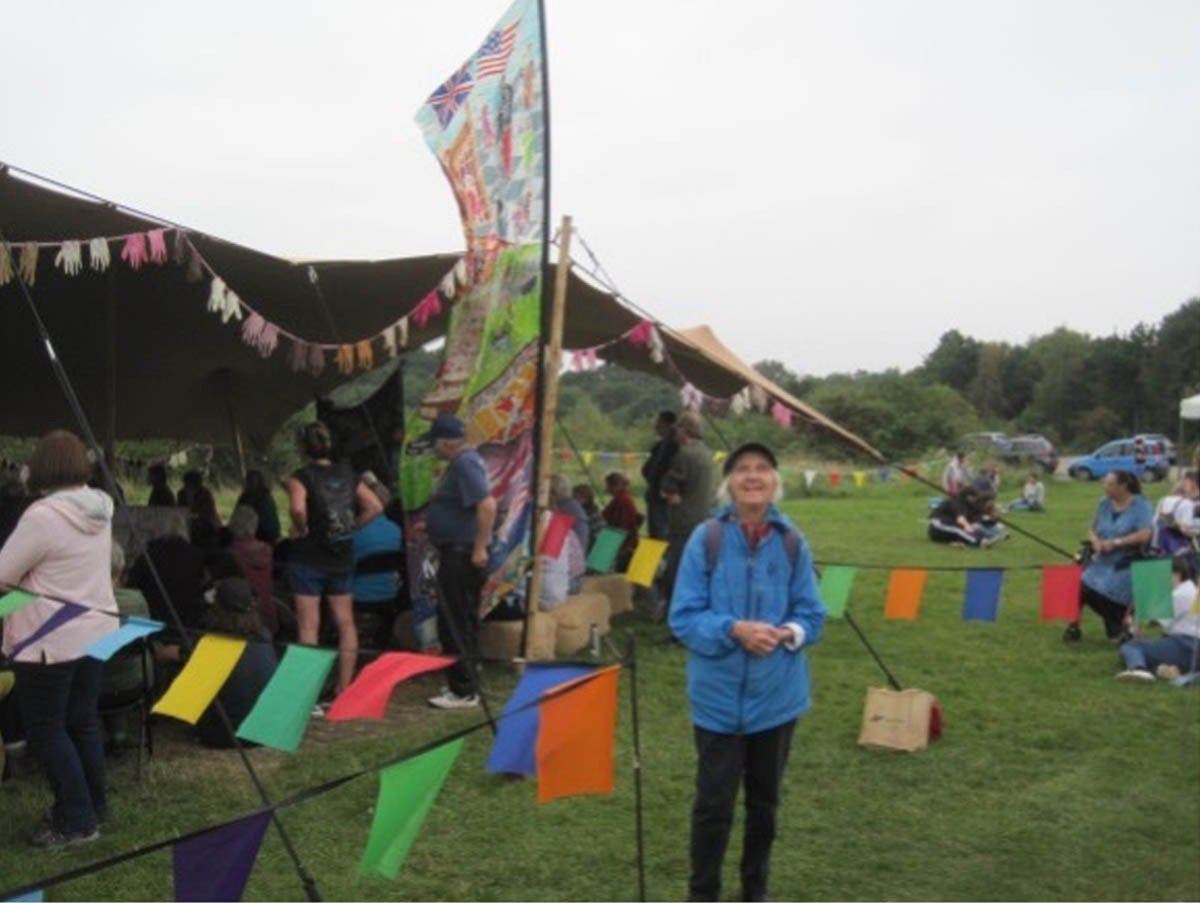
Legacy
In 1992, at the ‘end’ of the Cold War, RAF Greenham Common closed and, in 1997, the land was returned to the public as parkland. After 19 years of continuous occupation, the Greenham Common Peace Camp finally closed in 2000. In its place, the Commemorative and Historic Site and Peace Garden were established in 2002, in part to help ‘heal the breaches that developed between the protestors and the community of Newbury’.
Thinking back to the woman I spoke to at the station kiosk, I wondered how young people today would find out about these grassroots movements (other than through chance encounters such as ours). Many young people are campaigning for a fairer world. But anecdotally (and despite articles such as this one), there appears to be an ‘amnesia’ about such historic events. Why is this?
The reasons may be many and varied: school education missing significant social movements; a lack of media interest, based in part on the ‘need’ to cover the next ‘big thing’; political desire to bury memories of collective action. Perhaps even the ‘simple’ difficulty of dealing with information overload?
Women continue to struggle for true equality both in the UK and across the world. In this context, the Greenham Women’s greatest legacy is arguably two-fold: they remind us that collective action gives people power in the face of institutions massed against them; and they also remind us of the power of women in demanding their voices be heard.





